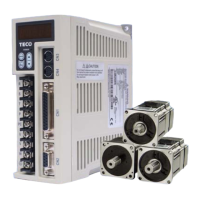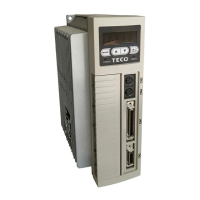What to do if TECO JSDEP-30A Servo Drives show over-voltage error?
- LLucas GarciaAug 19, 2025
If your TECO Servo Drive displays an over-voltage (regeneration error), it means the main circuit voltage has exceeded the maximum allowable value (410V). First, use a multimeter to check if the input voltage is within the specified limit. Next, verify that Parameter Cn012 is set correctly. If the alarm appears during operation, extend the acceleration/deceleration time or reduce the load ratio within the permitted range. If the problem persists, an external regeneration resistor might be needed.




